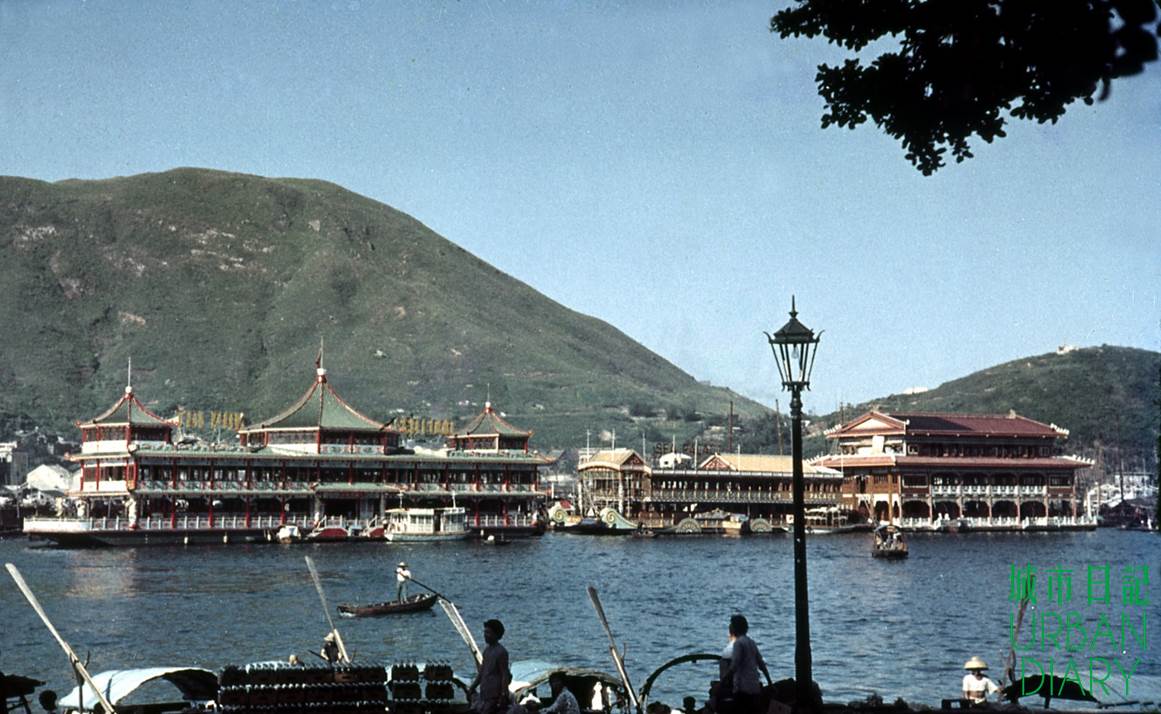(As told by Mr. Encore Sin Pui On)
Just like other water communities in Cheung Chau and Shau Kei Wan, Aberdeen and Ap Lei Chau boasted a vibrant harbour in the early years. In the 1950s and 60s, the fisheries industry thrived in Aberdeen. Since air pumps were not yet popular, the early floating restaurants monopolized the supply of fresh fish. With the completion of Jumbo in 1976, the “three kingdom” competition between Sea Palace, Tai Pak, and Jumbo began. This was the golden age of Aberdeen’s fisheries industry.
Encore Sin began to study Aberdeen’s history in the 1990s. After talking with an uncle who worked in floating restaurants and shipyards, he found out that the history of floating restaurants go back to the “Dance Hall Boats” (Go Tong Boats) along the coast of Guangzhou. “Dance Hall Boats” were boats that offered dancing and banquet services. The “Dance Hall Boats” in Aberdeen, however, focused on serving banquets for the fishermen.
In the early years, there was no typhoon bulwark on the two channels of Aberdeen. Water flowed smoothly which was good for fish farming. The early “Dance Hall Boats” relied on the fish farmers for the supply of seafood. Fishermen banquets usually came in two rounds: five o’clock was the first round, and seven o’clock was the round. One could almost imagine the busy festivities shared between the guests of the two rounds.
The emergence of floating restaurants was a result of the expanding base of customers for “Dance Hall Boats”. In the early years, Ap Lei Chau had a cemetery which mainly housed the deceased people from North Point. After the funeral, relatives and friends left Ap Lei Chau on sampans. They would often pass by “Dance Hall Boats” asking for food. As time went by, “Dance Hall Boats” became floating restaurants which served both fishermen and outside guests. The competition between floating restaurants intensified in the 1970s, when Sea Palace and Tai Pak controlled the market. Later on, Jumbo entered the scene. Financed by big corporations, Jumbo subsequently acquired both Sea Palace and Tai Pak.
Tides turn and fortune comes full circle. Today’s floating restaurants is no longer the same as those before. The older generation of floating restaurants supplied local seafood fresh off Aberdeen. Today, floating restaurants serve seafood from around Southeast Asia. Armed with outside capital, floating restaurants increasingly cater to tourists. The change in floating restaurants parallels the dwindling water communities in Aberdeen.




